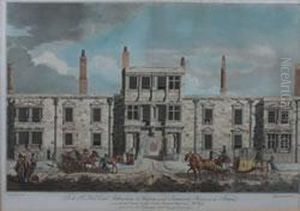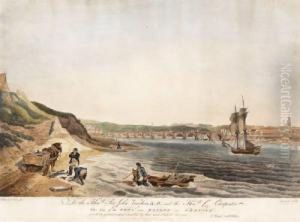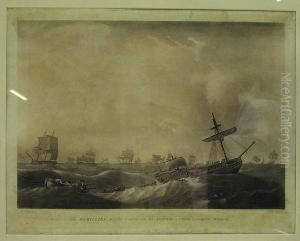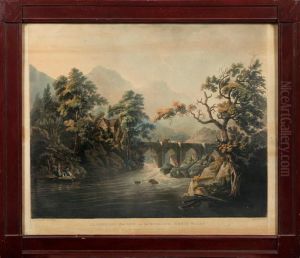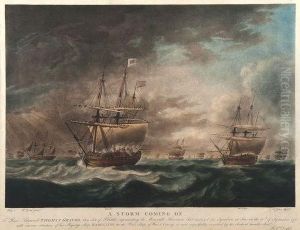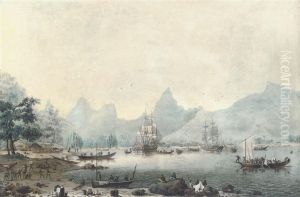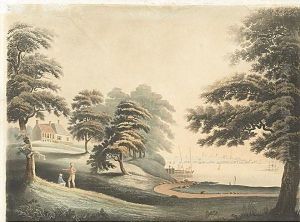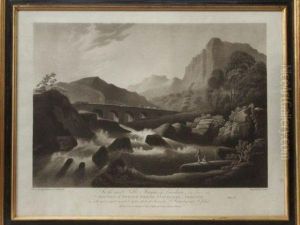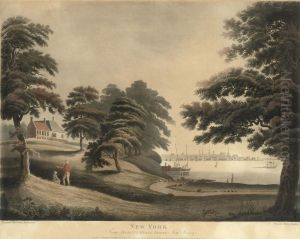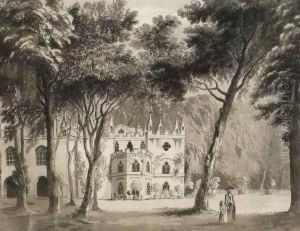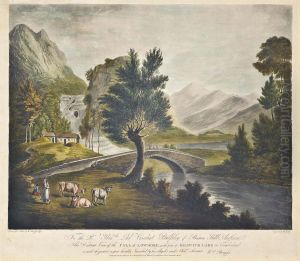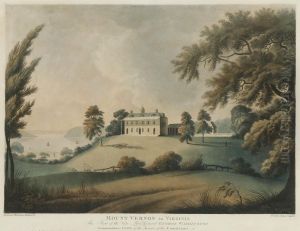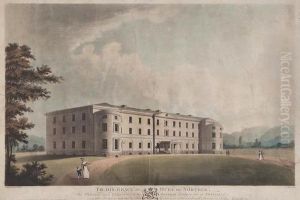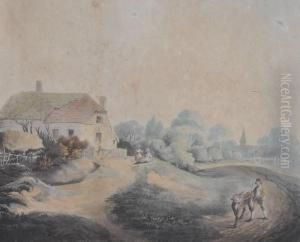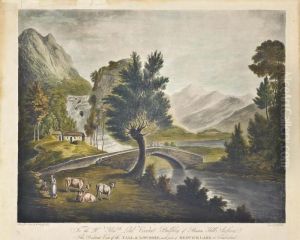Francis Jukes Paintings
Francis Jukes was an English artist and engraver, renowned for his development and mastery in the field of aquatint engraving, a medium that became popular in the late 18th century for its ability to mimic the effects of watercolor paintings. Born in 1745, Jukes originally hailed from Martley, Worcestershire. His career began in the realm of line engraving, but he soon shifted his focus towards aquatint, attracted by its potential for more expressive and atmospheric effects.
Jukes' work primarily involved landscapes and maritime scenes, capturing the British countryside, coastal areas, and notable architectural landmarks with a remarkable sense of atmosphere and depth. He was particularly adept at conveying different times of day and weather conditions, making his prints highly sought after for their realistic rendition of natural light and shadow. His contributions to the field of aquatint were significant, and he played a crucial role in popularizing this technique in England.
Throughout his career, Francis Jukes collaborated with several artists and publishers, producing a vast array of prints that were distributed widely across Britain and beyond. Among his notable collaborations was with the artist and poet William Combe, on the series of illustrations for 'The Tour of Doctor Syntax in Search of the Picturesque', a satirical work that enjoyed great popularity. Jukes also worked with other prominent figures of his time, contributing to the visual documentation of the changing British landscape and its architectural heritage.
Despite his success and influence, Jukes faced financial difficulties later in life, a common plight for many artists of the period. He continued to work up until his death in 1812, leaving behind a legacy as one of the foremost practitioners of aquatint engraving in Britain. His works remain in collections and museums, illustrating not only his technical skill and artistic vision but also providing a valuable window into the British landscape and societal changes of the late 18th and early 19th centuries.
